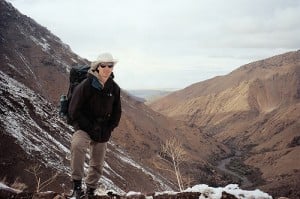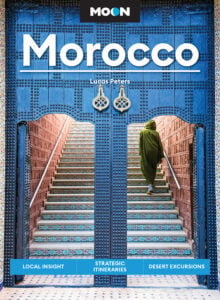 If you are thinking of visiting Morocco for the trekking opportunities in the High Atlas Mountains, there is no bad time to go. Depending on what type of trek you desire and your physical abilities, you will be able to find a trek at any time of the year.
If you are thinking of visiting Morocco for the trekking opportunities in the High Atlas Mountains, there is no bad time to go. Depending on what type of trek you desire and your physical abilities, you will be able to find a trek at any time of the year.
There are a number of easy and moderate day hikes in Morocco’s High Atlas Mountains. Some of these hikes will take a good portion of the day but should be manageable by most people. Toubkal Park and the Azaden Valley offer hikes for those with a bit more experience and stamina. If you’d like to enjoy a couple days of hiking in the High Atlas Mountains, there are tours available that allow trekkers to stay with a local family so that they don’t need to shuttle back and forth from the city day after day.
The ascent to Jebel Toubkal is by far the most popular trek in all of Morocco, in part because it is a highly traveled route and doesn’t necessarily require a guide. It takes at least two days in good weather to make the climb. Treks up to Jebel Toubkal begin and end in Imlil village. There are mountain refuges and camping on the route to the top of the mountain where hikers are welcome to rest for the night. The scree slope is the most difficult part of the trail, and trekkers need to take it slow to avoid altitude sickness. As always, trekkers should be ready for any type of weather as snow can occur in even in the summer months.
A western High Atlas trek is a bit gentler than the hike to Jebel Toubkal. These lower mountain ranges head to the Souss plains, where the weather is warmer and there is more foliage. Despite this tranquil landscape, there are still plenty of deep gorges, jagged peaks, forests and valleys with an abundance of walnut, olive, date and almond trees. You will find the area dotted with Berber villages.
Spring is a great time to trek in this area as the Tichka Plateau comes alive with wildflowers. The villages in this area are more remote than most and foreign trekkers are a rarity. Because it is not as heavily traveled as other parts of the country, trekkers must be prepared with their own food and lodging. There are no official refuges and hardly any hotels except for those at the bases of Taliouine and Taraudannt. Bring your own tent and supplies so that you don’t need to worry about the lack of hotels and food. Having a guide in this area can be helpful so that you can tap into his knowledge, advice and recommendations. Guides can also arrange for a mule if you want one.
Day trips in this area are available if you want to stay in the hotel at Afensou. A nine-kilometer, round-trip hike to Imoulas is a great trek on Sundays when the village souq comes alive.
Trekking in the High Atlas Mountains is not out of the question in the winter, but many routes may be blocked by snow. However, if you can only go when the snow is falling, consider doing day treks in the High Atlas range instead.
Posted by JoAnna Haugen, managing editor at Journey Beyond Travel and author of Kaleidoscopic Wandering.
Photo by Jaboney.








